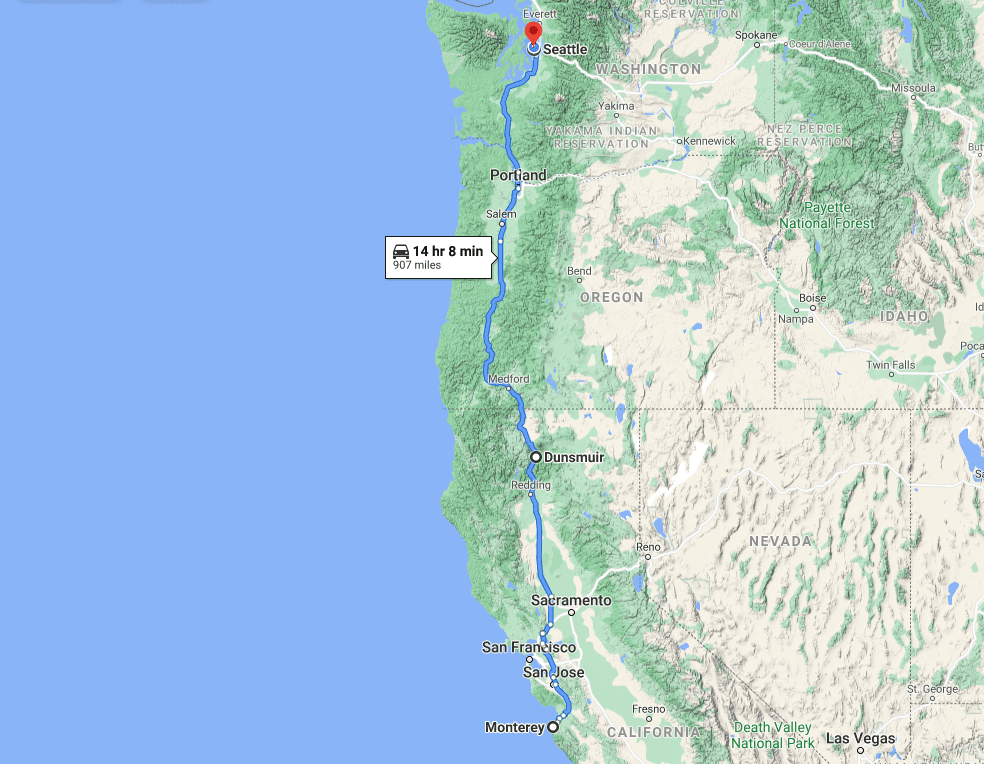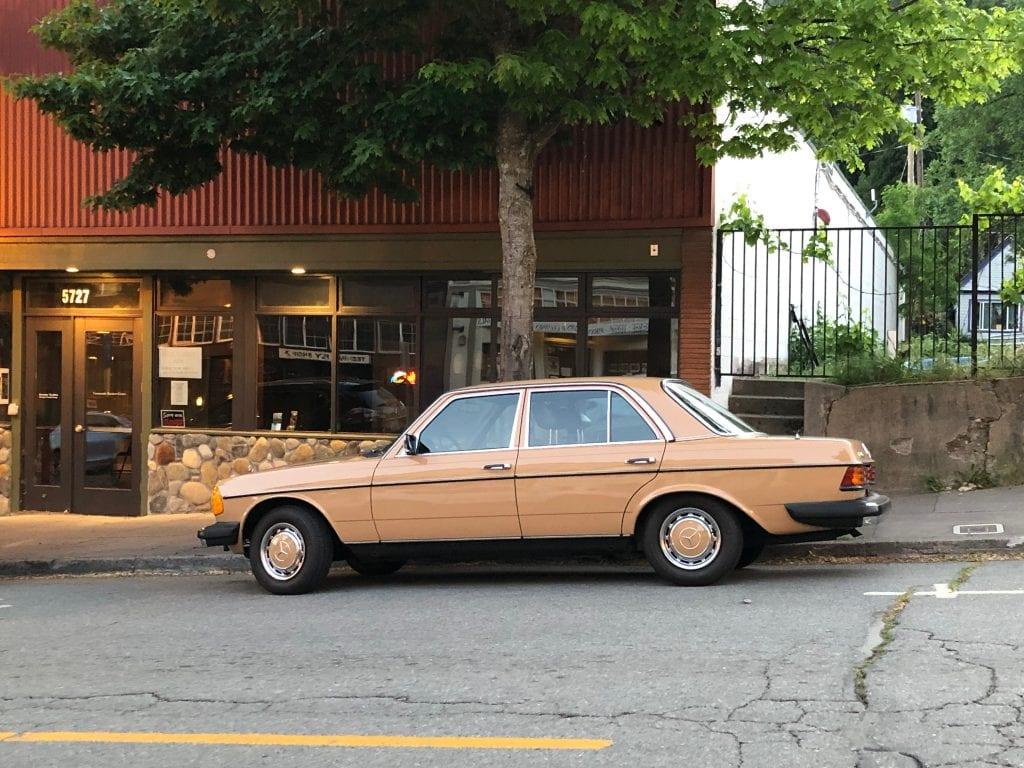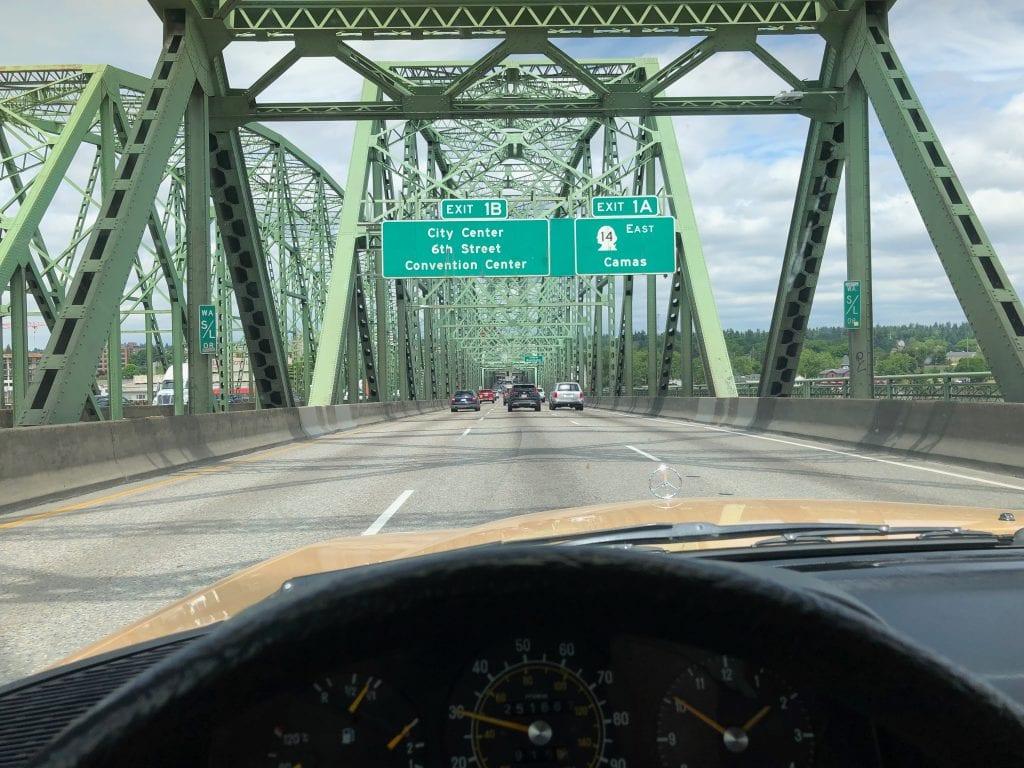Driving the 240D Home to Seattle

The map between Monterey and Seattle presents some pretty compelling options. Of course, a drive up Highway 1 along the coast is tough to beat. It’s got great scenery, charming towns, and entertaining tarmac. It’s also fun to head inland and explore the two-lane blacktop east of the Cascades, perhaps with a jaunt to Crater Lake thrown in for good measure.
But I opted for the boring route: pretty much a straight shot up Interstate 5. Why? Because driving a new-to-you, 40-year-old car can dramatically shift your priorities. The 240D was running well, but it was still too early to be cavalier. Taking I-5 meant having consistently good cell phone service as well as better proximity to towns with repair shops that would know their way around an old Benz.
Fortunately, for much of the way, it’s also quite pleasant to drive.
I departed the Monterey area after a morning 18 and lunch at Poppy Hills. That gave me about six and a half hours of daylight to make it to my overnight stop at the Mossbrae Hotel in Dunsmuir, near the Oregon border. Daylight is another important consideration when you’re driving a 240D, as its meager US-spec sealed beam headlights are about as bright as a pair of dinner candles. (More on this in a later post, when I swap them for far brighter H4 Hellas.)
The first half of the day’s drive, between Monterey and Sacramento, consisted mainly of crowded, fast-moving Interstate. The 240D handled it better than you might think. Sure, it’s famously slow to 60 mph, taking about 20 seconds. But once you’re up to speed, it’s happy to hum along at 70 or 75 mph, where the engine is near its peak output.
There’s an enjoyably tactile quality to operating the car at speed, which is sorely missing in modern cars. Small inputs to the wheel or throttle produce immediate feedback through your hands and feet, as well as your eyes and ears. The difference between 70 and 75 mph is quite palpable in the 240D, whereas in a modern car it’s just a number on the dial. With this level of speed awareness, you really don’t need cruise control — which is a good thing because the Benz doesn’t have it.

I arrived at Dunsmuir just after sunset and parked the 240D on the main drag (pictured above). The small village, known for its clean water and great fishing, lies in the shadow of Mt. Shasta, one of the state’s highest peaks. Pretty much everything was closed by the time I arrived, including sadly the famous Yaks burger and beer joint. For dinner, I had to make do with a mediocre Starbucks sandwich instead.
I-5 rises pretty dramatically as you approach the Oregon border heading north, and one of the challenges of Day Two was climbing the mighty Siskiyou Pass. It lies just past the California state line at an elevation of 4310 feet, the highest point on I-5’s entire 1381-mile length.
If the 240D was ever going to let me down, it would likely be here. Without turbocharging, its OM616 four-cylinder diesel would definitely be feeling the effects of the altitude. And with only 62 hp in ideal conditions, there’s not much oomph spare. I had visions of having to drop down to second gear and chug along behind slow-moving tractor-trailers in the truck lane. But the Benz handled the pass in stride, maintaining at least 55 mph even over the steepest parts. Yes, it was floored in third gear, approaching redline, but I figure that likely blew out quite a bit of carbon that had built up over the years.
Past Ashland, I-5 becomes flatter and straighter, providing both the car and me a chance to relax and simply cruise along. The miles piled up surprisingly fast, and before I knew it we were crossing the mighty Columbia River into Washington State (pictured below). Fun fact: the I-5 North bridge across the Columbia first opened to traffic in 1917 and is still in use 100+ years later, handling over 60,000 vehicles daily. That makes it even more durable and long-lived than a W123!

Another fun fact: the 240D’s prior owner, Bill, told me when I picked up the car that, since he originally imported it to California, it had never left the state. That’s 44 years in one place. And here we were, just a few days later, crossing two state lines in as many days.
Not long after, the car would be resting safely in my Seattle garage, its new home, having completed the full 900+ mile journey without missing a beat.
Next Post: Sorting the 240D: the 250,000-Mile Service